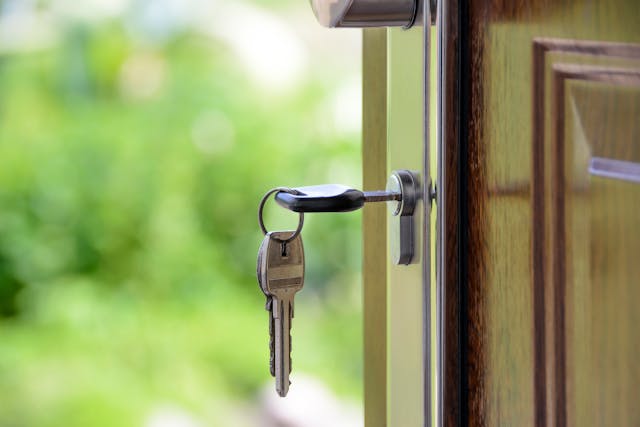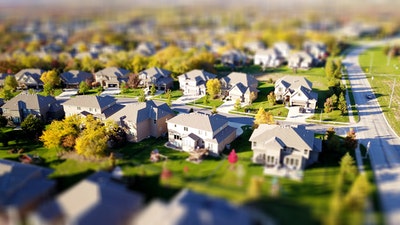10 Tips for Constructing High-Wind Resilient Homes

Constructing homes that can withstand high winds is crucial, especially in areas frequently hit by hurricanes and severe storms.
The right architectural choices and building materials can significantly mitigate the risk of damage, ensuring the safety and security of both the structure and its inhabitants.
In this article, we explore essential strategies for building homes designed to resist the destructive forces of high winds, providing homeowners with peace of mind during adverse weather conditions.
1. Understand Your Risk
Before embarking on construction, it is vital to assess the wind risk in your specific area. Historical weather data and local climate patterns play a crucial role in this analysis, helping to determine the frequency and intensity of high wind events you might expect.
This risk assessment informs many aspects of the building process, from the choice of structural materials to the design of the building itself.
Understanding your risk level ensures that the home is appropriately fortified against potential wind threats, aligning with regional building codes that are often based on these risk factors.
2. Choose the Right Windows
Windows are among the most vulnerable parts of a home during high wind events. To protect against the impact of flying debris and intense wind pressures, installing the best impact windows is essential.
These windows are specifically designed to withstand high impacts without shattering, keeping the home’s envelope secure.
Their robust construction helps prevent sudden pressure changes inside the home that can lead to structural failures.
When selecting windows, it is important to look for products that meet or exceed the local building standards for wind resistance, ensuring they are capable of protecting your home in the toughest conditions.
3. Reinforce Roof Structures
The roof is another critical area that requires attention when building a wind-resistant home. These reinforcements help prevent the roof from detaching from the rest of the structure during severe wind events.
Additionally, choosing suitable roofing materials that offer better wind resistance is crucial. Materials should be selected based on their ability to resist being lifted by high winds, with options like asphalt shingles, metal roofing, or tiles often recommended for their durability and performance in storm-prone areas.
4. Secure External Doors
External doors, including garage doors, need to be robust enough to withstand high winds. These doors should be reinforced and properly sealed to prevent wind from entering the home, as internal pressure can lead to significant structural damage.
For garage doors, especially, consider installing bracing systems that can prevent them from buckling under wind pressure. The integrity of these doors is essential for maintaining the safety of the home, as they often represent the largest openings in the structure.
Regular checks and maintenance are also necessary to ensure that all doors remain in good condition and function correctly under stress.
5. Anchor the Foundation
Properly anchoring the foundation is fundamental in preventing the entire structure from being uplifted or shifted by intense winds.
Techniques such as using deep, reinforced concrete pilings can secure the home’s foundation to the ground, providing stability even in extreme weather. Additionally, ensuring that the basement and lower levels are adequately sealed and waterproofed can prevent water from undermining the foundation during storms.
The type of foundation chosen should be based on soil type, climate, and the specific wind risks identified in the initial assessment phase, each contributing to the overall resilience of the home.
6. Consider the Landscape
The landscaping around a home can also play a critical role in wind resistance. Strategic placement of trees and shrubs can serve as natural windbreaks, reducing the force of the wind before it hits your home.
However, it’s important to choose strong, native plants that can survive local weather conditions and to place them at a safe distance from the building to prevent them from becoming projectiles in high winds.
Additionally, ensuring that all trees around the home are regularly pruned and maintained will minimize the risk of branches breaking off and causing damage during storms.
7. Use Superior Siding Materials
The siding material of a home not only defines its aesthetic appeal but also contributes significantly to its ability to withstand high winds.
Materials such as brick, stucco, and certain types of engineered wood are known for their durability and resistance to wind damage. When selecting siding materials, it’s essential to consider how they will perform in extreme weather and ensure they are properly installed with wind resistance in mind.
This might include using special fasteners and techniques that enhance the material’s ability to stay intact under duress.
8. Implement Wind-Resistant Design Features
Certain architectural features can inherently improve a home’s ability to withstand winds. Features such as a hip roof with four sloping sides are more aerodynamic and therefore more likely to reduce wind pressure than gable roofs.
Additionally, minimizing roof overhangs can decrease the risk of uplift during high winds. Incorporating these wind-resistant design features during the planning and construction stages can have significant benefits in terms of enhancing the home’s overall stability in adverse conditions.
9. Build Internal Pressure Relief Systems
Internal pressure changes are a major cause of damage in high wind events. Designing homes with features that help equalize internal and external pressures can prevent structural failures.
This includes installing vented soffits, ridge vents, and other specialized ventilation systems that allow air to flow more freely into and out of the attic and other enclosed spaces, reducing the potential for roof uplift and other wind-related damage.
10. Regular Maintenance and Inspections
Finally, the longevity and effectiveness of any wind-resistant features depend on regular maintenance and inspections.
Homeowners should schedule regular checks to ensure that all aspects of their home’s wind mitigation strategies, from the roof to the foundation, are in optimal condition. This includes checking for and repairing any damage to roofs, windows, doors, and siding that could compromise the home’s integrity.
Regular inspections not only help maintain the structure’s ability to withstand high winds but also ensure that any issues are addressed promptly before they can lead to more significant problems.
Conclusion
Constructing a home that can resist high winds involves careful planning and consideration of many factors, from the materials used to the design and layout of the building.
By following the steps outlined—from understanding local wind risks and choosing the right building components to regular maintenance—homeowners can significantly enhance their property’s resilience. Investing in these measures not only safeguards the physical structure but also protects the lives of those within, making it a prudent decision for anyone building in a wind-prone area.






